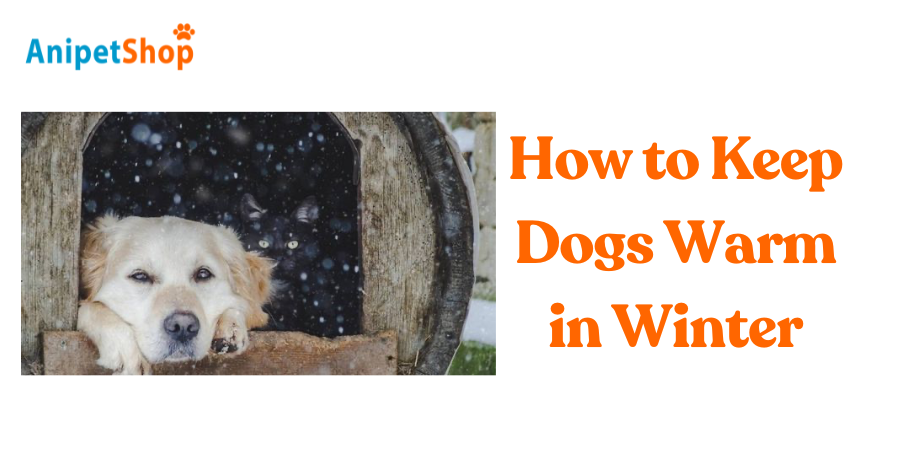How to Keep Dogs Warm in Winter
As the temperatures drop and winter approaches, your dog’s comfort and safety become a top priority. Just like humans, dogs feel the effects of cold weather, and ensuring they stay warm is essential for their health and well-being. Whether your furry friend is a high-energy outdoor explorer or loves curling up indoors, protecting them from the chill is crucial.
In this guide, we’ll explore practical tips and expert advice to keep your dog cozy and thriving through the winter months. From upgrading their bedding to dressing them in warm clothing, you’ll find everything you need to know to ensure your dog stays warm and healthy, no matter how cold it gets outside!
Key Takeaways:
- Dress your dog in sweaters, raincoats, and insulated booties to shield them from cold temperatures.
- Upgrade your dog’s bedding with memory foam or orthopedic beds and include microwavable heat packs to keep them cozy.
- Ensure outdoor shelters are sturdy, insulated, and weatherproof to provide adequate protection.
- Introduce indoor activities to help your dog stay fit and warm during winter months.
- Regular grooming is essential to maintain a healthy coat and prevent moisture-trapping mats.

Do Dogs Get Cold in Winter?
Yes, dogs can get cold in winter, just like humans. Dogs are susceptible to cold-related conditions such as hypothermia and frostbite. You may notice changes in their behavior when temperatures drop—signs like shivering, whining, or seeking warmer spots, all of which indicate sensitivity to the cold. Certain breeds, especially those with short fur or small body sizes, are more prone to feeling the effects of winter weather.
Cold air doesn’t just lower body temperature; it can also lead to dehydration and dry skin. “The dry air is just as hard for your dog as it is for you,” explains Dr. Zay Satchu, DVM, founder of Bond Vet in Brooklyn, New York. Make sure your dog always has access to fresh water to stay hydrated. If you notice your dog’s nose becoming dry or cracked, a pet-friendly nose balm can help maintain moisture.
How You Can Keep Your Dog Warm This Winter
To keep your dog warm this winter, upgrade their bedding and provide an insulated shelter. Dress them in warm clothing, adjust their diet and exercise routine, and watch for signs of arthritis. Don’t forget to maintain flea, tick, and worm control to ensure their comfort and health.
Upgrade Their Bedding & Insulated Shelter
As the temperature drops, your dog will likely spend more time curled up in their bed for warmth. Ensuring that their bedding is cozy and insulated from the cold is essential for their comfort. Start by choosing the right dog bed—opt for one with thick, insulating materials like memory foam or orthopedic foam, which not only provide warmth but also offer excellent support, particularly for senior dogs and breeds prone to feeling the chill.
If your dog sleeps indoors, place their bed in a draft-free area, such as the living room or your bedroom, and elevate it off cold, hard surfaces to prevent cold air from seeping in. Adding extra soft bedding, like blankets, allows your dog to burrow and feel secure. For an extra layer of warmth, consider using microwavable heat packs, especially for smaller dogs, puppies, or older pets.
For outdoor dogs, it’s crucial to ensure their shelter is both sturdy and insulated. A well-built, draft-free kennel placed out of direct exposure to the elements will keep your dog comfortable during frosty mornings. Elevating the bed off the ground can further prevent moisture from creeping into the blankets. Layering the kennel with thick bedding, such as warm blankets and cushions, will add extra comfort and insulation, making it a welcoming place for your pet to escape the cold. Heated bedding options like microwavable heat pillows can also be added to keep your dog snug throughout the winter months.
Dress Them in Warm Clothing
Dressing your dog in warm clothing is an excellent way to protect them from the winter chill, especially for breeds with short coats like greyhounds and dalmatians, or dogs that spend a lot of time outdoors. A variety of options are available, from snug knit sweaters to thick, water-resistant jackets and even adorable accessories like booties and beanies.
When choosing a winter jacket for your dog, look for one that covers the belly, as it helps trap their body heat, providing more effective insulation. For wet or snowy days, consider using a water-repellent jacket to keep them dry. However, be sure to dry any wet clothing thoroughly to prevent your pet from staying cold for long periods.
For a fun twist, you can find jackets in different designs, including those that showcase your favorite sports team or feature witty statements. While style is a bonus, comfort is key. Ensure the clothing fits properly—neither too tight nor too loose—and avoid items with dangling cords or buttons that could pose a choking hazard.
Revisit Their Diet and Exercise Routine
Cold temperatures often make it harder to stay active, but it’s essential to keep your dog moving to prevent weight gain. If you’re feeding your dog the same amount of food but reducing exercise, the extra calories can quickly lead to weight gain. Opt for shorter walks during the colder mornings and evenings, and use high-visibility gear like reflective leads, harnesses, or jackets to ensure safety and warmth.
For more active dogs, like those who enjoy jogging or hiking, a coat like the Thermax Vest is perfect. It adapts to the dog’s body shape, providing freedom of movement while keeping them warm. It’s like Skins, but for dogs! Don’t let an outdated dog coat prevent outdoor adventures; try to walk your dog during the warmest part of the day to keep both of you comfortable.
If outdoor exercise isn’t an option, play indoor games like hide-and-seek or use a treadmill to keep your dog engaged and active. Remember, outdoor dogs may burn more calories in winter to stay warm, so consider adjusting their evening meals instead of offering extra treats. This allows you to monitor their calorie intake and ensure they remain healthy without gaining unwanted weight.
Watch for Signs of Arthritis & Heat-Seeking Behavior
Winter can be tough on dogs, particularly those with arthritis or joint issues. Look out for early signs of arthritis, such as reduced activity, lagging behind on walks, or difficulty jumping onto beds, couches, or into the car. These signs may indicate your dog is experiencing joint pain, which can worsen in cold weather.
In addition to joint discomfort, your dog may display heat-seeking behavior during colder months. If your furry friend is shivering or trembling, they are likely feeling the cold and may seek out warmer spots, such as beds, couches, or even lying close to heaters. Be cautious, though—while it’s natural for dogs to snuggle near heat sources, getting too close to heaters or fireplaces can dry out their skin or even cause burns if they fall asleep.
Continue Flea, Tick, and Worm Control
Flea, tick, and worm control should remain a priority throughout the winter months, even though the colder weather may lead some to think these pests are less active. Fleas can continue to thrive indoors, particularly in homes with carpets or heating systems that provide the perfect environment for them. Regularly using vet-recommended flea & tick preventatives is essential to keep your dog protected.
After walks, it’s important to check your dog for ticks, as they can still be present in winter. Additionally, keep up with deworming medications as advised by your vet to ensure your dog remains free from internal parasites.
Don’t Neglect Their Grooming Routine
Maintaining a consistent grooming routine during winter is essential, especially for dogs with long or thick coats. Their fur is their main source of warmth, so while it’s tempting to let it grow unchecked, regular grooming is crucial to prevent matting, reduce shedding, and avoid skin problems. Brushing more frequently helps keep their coat clean and prevents dander buildup between washes.
Avoid shaving or trimming your dog’s fur during the winter months, as their long coat provides natural insulation. Instead, use grooming tools like Furminators, which strip out dead hair while preserving the length for added warmth. Winter weather can also lead to wet, muddy coats, making it more important to brush and bathe them when necessary.
When bathing your dog in winter, use warm water and ensure they are dried off completely with a towel before allowing them back outside to prevent chills. Keeping up with their grooming will ensure your dog stays warm, comfortable, and free from matted fur throughout the colder months.
What to Do if Your Power Goes Out
The good news is that if you’re feeling comfortable, your dog likely is too—making it the perfect time to snuggle and share warmth.
If the power outage lasts for a while, gather some warm bedding, such as blankets, quilts, or cozy dog beds, and make sure your dog has plenty to stay comfortable. It’s also perfectly fine for your pup to wear their sweater and booties indoors to help maintain their body heat.
If you have portable hand warmers, these can be useful for extra warmth. Just be careful not to place them directly on your dog’s skin or anywhere they could chew on them. Instead, tuck them into the bedding to create a warm, toasty space for your dog.
If your dog still seems cold despite your efforts, and snuggling isn’t helping or isn’t possible, it’s time to consider finding a warmer place. Your vet or a local kennel may offer short-term boarding to ensure your dog stays safe and warm.
Frequently Asked Questions
How Do I Know if My Dog’s Winter Clothing Fits Properly?
Measure your dog’s chest and neck to ensure their clothing fits well. Check regularly for any restrictions in movement and adjust as necessary.
Can Microwavable Heat Packs Be Safely Used in Dog Beds?
Yes, microwavable heat packs are safe for dog beds. Ensure the heat pack is designed for pets and use heat-resistant bedding materials.
Which Signs Indicate My Dog Might Have Arthritis in Cold Weather?
Signs include stiffness, limping, and reluctance to climb stairs or jump. If these symptoms appear, consult your vet for joint supplements or other treatments.
Are There Specific Diets Recommended for Dogs During the Winter Months?
Yes, provide high-calorie diets to support energy levels and hydration. Include nutrient-rich foods to boost the immune system and address seasonal allergies.
Conclusion
By following these simple steps, you can ensure your dog stays warm, healthy, and happy throughout the winter. From upgrading their bedding and shelter to providing cozy clothing and adjusting their routine, every detail counts in keeping your furry friend comfortable. Don’t forget to maintain their grooming, monitor for signs of arthritis or cold sensitivity, and continue their flea, tick, and worm treatments. With the right care, your dog will not only survive but thrive during the colder months, making winter just another season to enjoy together. Stay prepared, and keep your dog safe all winter long!
Related Post:
Ticks on Dogs: https://anipetshop.com/dog-care/how-do-find-ticks-on-dogs/
Fleas on Dogs: https://anipetshop.com/dog-care/flea-on-dogs/
Lily Watson is an author specializing in veterinary care in Australia. With a profound passion for animal welfare and a solid foundation in veterinary science, Lily has dedicated herself to disseminating valuable knowledge and information for both pet owners and professionals in this field.

